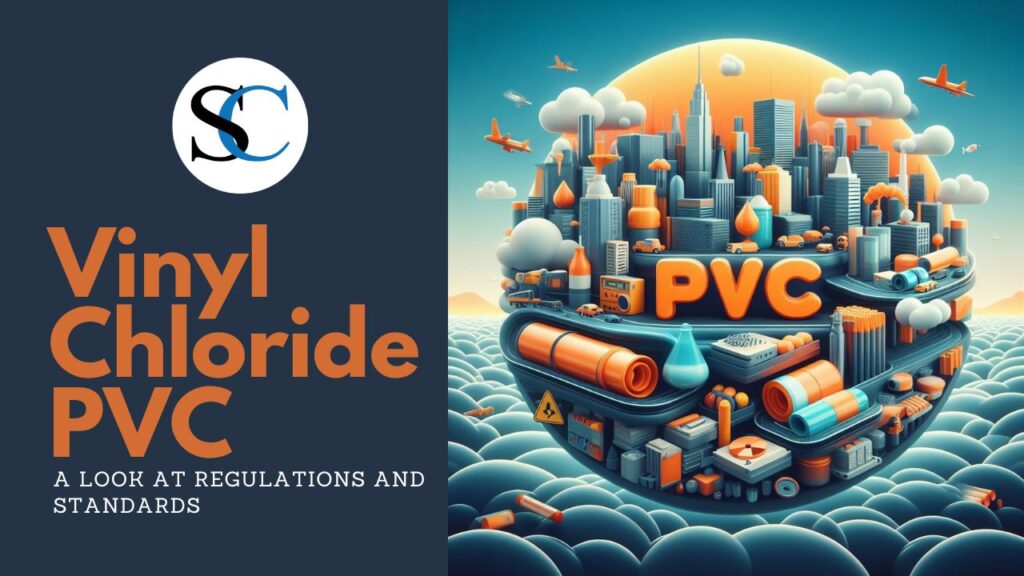Vinyl Chloride PVC, also known as chloroethylene, is a versatile material with a wide range of applications in pipes, wire insulation, and building materials. However, concerns exist regarding its safety during production, use, and disposal. This blog post dives into the world of Vinyl Chloride PVC regulations and standards, aiming to shed light on how these frameworks ensure responsible handling of this material.
Why Regulations and Standards Matter
Vinyl chloride monomer, the building block of PVC, is classified as a known human carcinogen by the Environmental Protection Agency (EPA) [1]. This means prolonged or repeated exposure can increase the risk of cancer. Additionally, vinyl chloride exposure can cause various health problems, including:
- Central nervous system effects
- Liver damage
- Blood disorders
Regulations and standards establish guidelines for the production, use, and disposal of vinyl chloride to minimize these risks. They serve several key purposes:
- Protecting Workers: Standards like OSHA’s Vinyl Chloride standard (1910.1017) ensure safe working conditions for those involved in PVC production [2]. These regulations mandate specific protocols for handling the material, including proper ventilation, personal protective equipment, and medical monitoring programs.
- Safeguarding the Environment: The EPA’s National Emission Standards for Hazardous Air Pollutants (NESHAP) regulate vinyl chloride emissions from production facilities [3]. These regulations set limits on the amount of vinyl chloride that can be released into the air, minimizing environmental contamination.
- Promoting Consumer Safety: Regulations often indirectly impact consumer products containing PVC. For instance, restrictions on lead content in children’s toys can influence the formulation of PVC used in those products.

Understanding the Regulatory Landscape
The regulatory landscape for vinyl chloride PVC involves a complex interplay between various agencies:
- The Occupational Safety and Health Administration (OSHA): Focuses on protecting workers’ health and safety in the workplace. Their standards outline safe handling practices for vinyl chloride in production facilities.
- The Environmental Protection Agency (EPA): Regulates air and water quality. The EPA’s NESHAP program specifically targets vinyl chloride emissions from production facilities.
- Consumer Product Safety Commission (CPSC): Sets safety standards for consumer products, which can indirectly impact the use of PVC in certain applications.
- State and Local Regulations: Some states may have additional regulations specific to vinyl chloride or PVC use within their jurisdictions.
Beyond Regulations: Innovation and Consumer Choice
Regulations provide a safety net, but innovation and informed consumer choices are important aspects of responsible PVC use.
- The Drive for Safer Alternatives: The vinyl chloride industry constantly explores alternative materials and production methods to minimize risks. For example, some manufacturers are developing PVC formulations with reduced levels of residual vinyl chloride monomer.
- Sustainable Manufacturing Practices: Look for brands prioritizing responsible sourcing and sustainable manufacturing processes throughout the PVC lifecycle.
- Educate Yourself: Stay updated on the latest developments regarding vinyl chloride PVC and its regulations. Reputable manufacturers and independent organizations are valuable sources of information.
The Future of Vinyl Chloride PVC
The conversation surrounding vinyl chloride PVC is ongoing. Research continues to explore potential health risks and develop safer alternatives. Regulations are constantly evolving to reflect new scientific understanding and technological advancements. As a consumer, understanding the regulations and standards surrounding vinyl chloride Polyvinyl chloride empowers you to make informed choices about the products you use.
Consumers can shape the future of PVC by considering both the regulatory framework and advancements in PVC technology.
PVC Polyvinyl Chloride: Myths Debunked – Is It Really Toxic?
PVC Polyvinyl Chloride: Myths Debunked – Is It Really Toxic?





